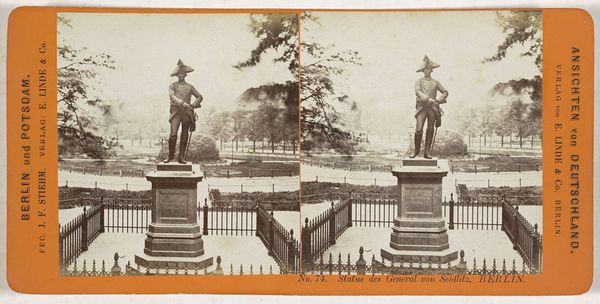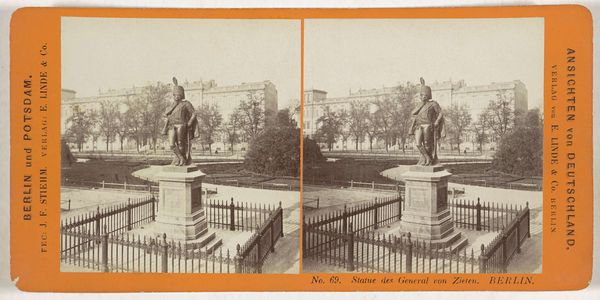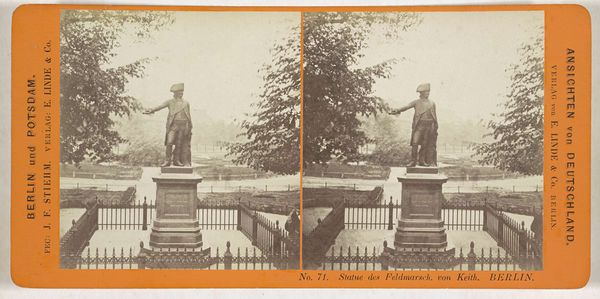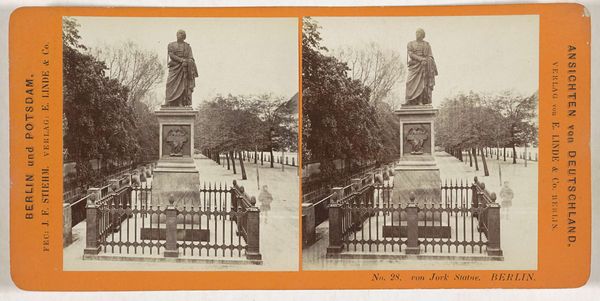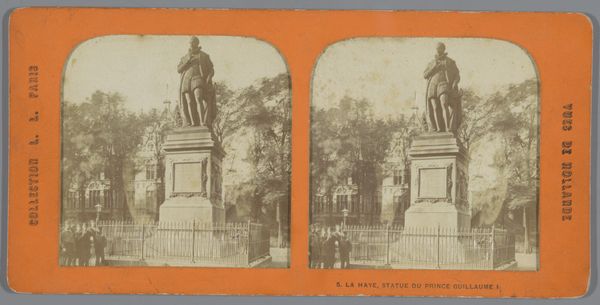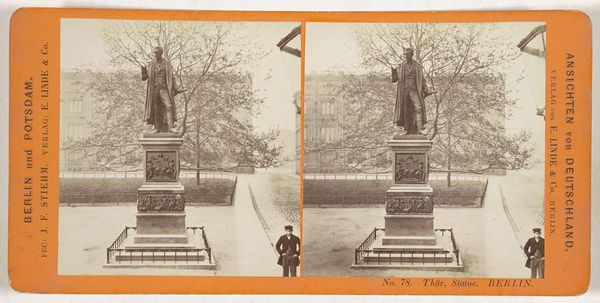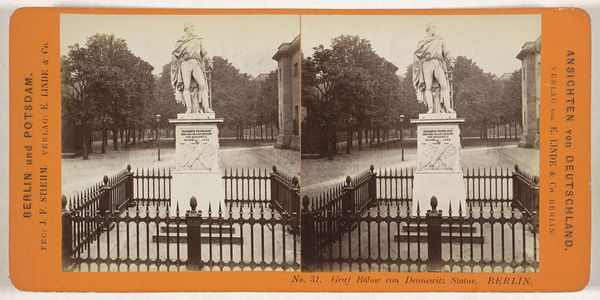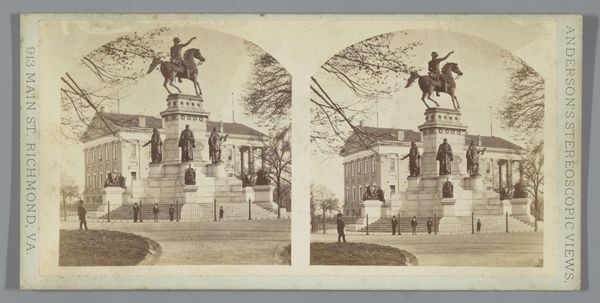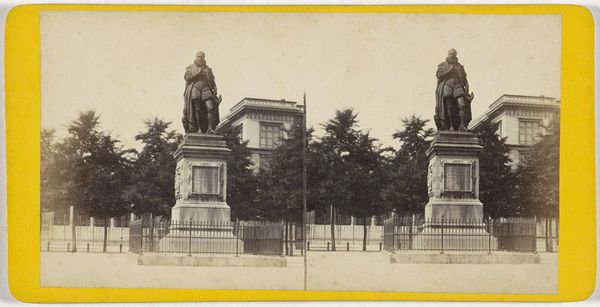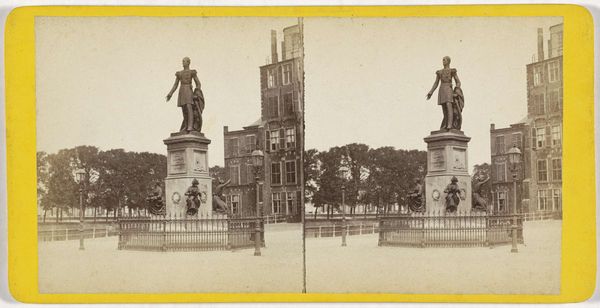
Standbeeld van generaal Hans Karl von Winterfeldt op het Wilhelmplatz, Berlijn 1868 - 1870
0:00
0:00
photography, sculpture, gelatin-silver-print
#
portrait
#
statue
#
photography
#
sculpture
#
gelatin-silver-print
#
realism
Dimensions: height 86 mm, width 176 mm
Copyright: Rijks Museum: Open Domain
Editor: This photograph by Johann Friedrich Stiehm, dating back to between 1868 and 1870, depicts a statue of General Hans Karl von Winterfeldt in Berlin. It's made of what looks like a gelatin-silver print and it's fascinating to see it in this stereoscopic format. The photo focuses heavily on this figure, placed in what I presume is a very public place. What stands out to you? Curator: Looking at the materiality, we must consider what gelatin-silver printing would have meant in the context of late 19th century Germany. This process allowed for mass reproduction and dissemination. While on its surface the photograph showcases a sculpture intended to memorialize Winterfeldt, it also participated in a much broader cultural project by those who commissioned the work. I am curious: how many copies were produced, by whom, for what purpose? How were those images used? This method helped popularize nationalism and certain ideologies through reproducible images of public sculptures. The means of production become deeply meaningful here. Editor: So the image itself, its method, allowed the statue, and what it represents, to spread? Curator: Precisely. It's about the confluence of industrial processes and artistic representation, how they reinforce dominant narratives. The iron fencing, the carved base, the tailoring and metalwork involved in making both the sculpture and printing this image each tell a different part of the story, what resources are devoted, how they're obtained. What’s foregrounded? What gets omitted? Editor: That makes me see this portrait photograph very differently, less about Winterfeldt himself, and more about this image and its life beyond its original location. Curator: Exactly. Think of photography and sculpture in this period not as simply mimetic representations, but as active agents in shaping public opinion and cultural memory. Editor: I’ve definitely learned to see the connections between material processes and social messaging! Thanks for expanding my view of this photograph.
Comments
No comments
Be the first to comment and join the conversation on the ultimate creative platform.
